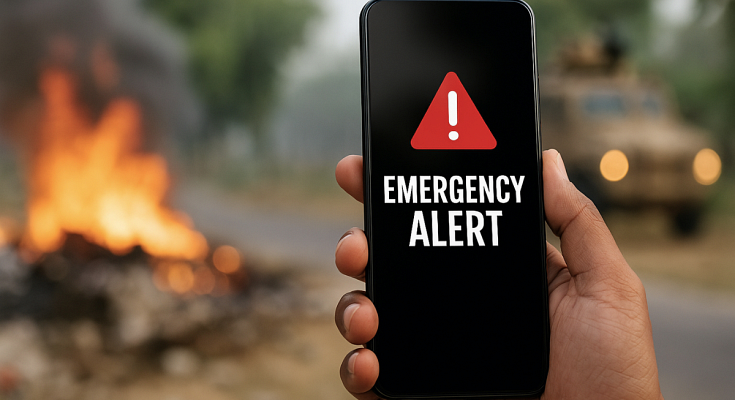Introduction
As hostilities escalate between India and Pakistan following India’s launch of Operation Sindoor, it’s vital to stay informed with real-time emergency alerts on your mobile device. These alerts can help you act quickly during critical situations like terror attacks, missile strikes, or airspace closures.
Emergency alerts use a special broadcast channel to bypass network congestion and deliver time-sensitive messages directly to your phone. This guide will show you how to enable emergency alerts on Android and iPhone devices so you don’t miss crucial safety warnings.
How to Enable Emergency Alerts on Android
- Open your Settings app
- Tap on “Safety and Emergency” or search “Emergency alerts” in the search bar
- Select “Wireless Emergency Alerts”
- Toggle ON all alert options, including test alerts and severe threat alerts
Note: On some Android phones like Samsung, Xiaomi, or OnePlus, these options may appear under Advanced Settings or Cell Broadcast. If you can’t find it, use the Settings search function.
How to Enable Emergency Alerts on iPhone
- Go to Settings and tap on Notifications
- Scroll down to the bottom to find Government Alerts
- Toggle ON Emergency Alerts and Test Alerts
With these settings enabled, your iPhone will now receive government-issued alerts including public safety warnings and national emergency notifications.
Why Enabling Emergency Alerts is Crucial Now
Amid rising military tensions, having emergency alerts active on your phone could be the difference between safety and danger. On Wednesday, India launched Operation Sindoor, unleashing 24 missiles on terror bases in Pakistan and PoK in retaliation for the Pahalgam attack that killed 26 civilians.
Subsequently, Pakistan attempted a widespread drone and missile offensive targeting over 15 Indian cities, which was reportedly foiled by the Indian Armed Forces. On Friday, Pakistan’s forces launched renewed strikes along the western border, again effectively countered by Indian defenses.
The situation remains volatile, and public safety protocols—including alerts and advisories—are being issued frequently by government agencies.
Impact on Civilian Infrastructure
Due to the ongoing conflict:
- 32 Indian airports have been shut for civilian operations until May 15 (source)
- Pakistan has closed its airspace to all traffic, reportedly using civilian aircraft as shields during drone strikes
Conclusion
In conflict zones or times of national emergency, enabling wireless emergency alerts is not just a safety precaution—it’s essential. Whether you use an Android or iPhone, take a few minutes to activate these features and ensure you receive timely updates during crises like the ongoing India-Pakistan escalation.
Stay safe, stay informed. And for updates on military operations and government advisories, continue following our coverage of India-Pakistan Airstrikes: Full Timeline and Impact.
Also Read: India-Pakistan Airstrikes: Full Timeline and Impact


